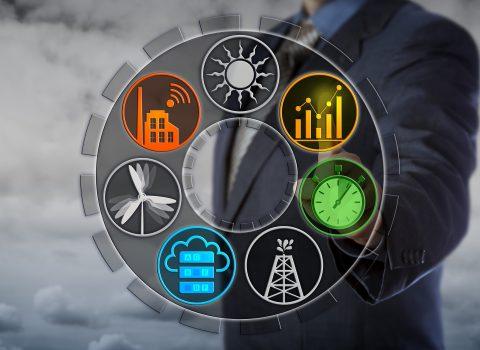-
Newsfeed
- ERKUNDEN
-
Seiten
-
Gruppen
-
Veranstaltungen
-
Reels
-
Blogs
-
Marktplatz
-
Angebote
-
Jobs
Energy Management Systems (EMS): The Digital Brains Behind Smart Energy Use

Published on: July 28, 2025
Author: Rupalini Wankhede
In a world striving for sustainability, operational efficiency, and net-zero emissions, Energy Management Systems (EMS) have emerged as the digital control centers of modern energy ecosystems. From industrial plants and commercial buildings to microgrids and smart cities, EMS helps organizations track, analyze, and optimize their energy use like never before.
But what exactly is an EMS? Why is it so important? And how is it shaping the future of clean energy?
Let’s dive in.
What is an Energy Management System?
An Energy Management System (EMS) is a software- and hardware-based solution that enables real-time monitoring, analysis, and control of energy consumption across a facility or enterprise. It integrates sensors, meters, data analytics, automation, and user interfaces to provide actionable insights that reduce energy waste, improve performance, and lower costs.
Think of EMS as the “brain” of your energy infrastructure — making decisions on when and how to use energy smarter.
Key Functions of EMS
- Real-time Monitoring
Track energy usage across systems (HVAC, lighting, production lines, EV chargers, etc.) - Data Logging and Reporting
Generate reports on energy trends, peak demand, and anomalies - Load Forecasting and Scheduling
Predict energy needs and align operations for cost-efficiency - Demand Response
Automatically shift or reduce loads during peak pricing or grid demand - Remote Control and Automation
Manage systems and devices remotely based on energy policies - Integration with Renewable Energy and Storage
Balance solar, wind, and battery storage dynamically
Where is EMS Used?
- Industrial Manufacturing: To reduce operational costs and carbon footprint
- Commercial Buildings: For HVAC and lighting automation
- Hospitals and Data Centers: Ensuring uptime while managing consumption
- Smart Cities: Coordinating public lighting, transport, and energy assets
- Renewable Energy Sites: Balancing production and grid demand
- Utility Grids: Load management, voltage optimization, and outage detection
Benefits of Implementing EMS
- 💡 Energy Savings: Up to 30% reduction in energy use with data-driven insights
- 🏭 Improved Operational Efficiency: Detect waste and streamline processes
- 🌍 Sustainability Goals: Lower carbon emissions and meet ESG targets
- 💰 Cost Reduction: Cut energy bills and avoid demand penalties
- 📊 Regulatory Compliance: Stay aligned with ISO 50001 and national policies
- 🔒 Energy Security: Monitor backup systems, prevent outages
Challenges to Consider
- High initial cost and integration complexity
- Cybersecurity risks in connected systems
- Need for employee training and cultural change
- Data overload without proper analytics tools
Future Trends in EMS
- AI and Machine Learning: Predictive energy optimization
- IoT Integration: Smarter devices and sensors feeding real-time data
- Blockchain for Energy Trading: Secure, peer-to-peer energy exchanges
- Cloud-Based EMS: Scalable, accessible from anywhere
- Carbon Tracking: Combining energy data with real-time emissions footprint
Final Thoughts
Energy Management Systems are no longer a luxury — they’re a necessity for businesses, governments, and institutions that want to thrive in the age of energy transition. As energy costs rise and sustainability becomes a mandate, EMS offers the intelligence needed to cut waste, boost performance, and lead the way to a cleaner, smarter energy future.
Whether you're operating a factory, managing a smart building, or running a renewable energy site — the time to go digital with energy is now.
#EnergyManagement #SmartEnergy #EMS #CleanTech #EnergyEfficiency #SmartBuildings #Sustainability #NetZero
- Art
- Causes
- Crafts
- Dance
- Drinks
- Film
- Fitness
- Food
- Spiele
- Gardening
- Health
- Startseite
- Literature
- Music
- Networking
- Andere
- Party
- Religion
- Shopping
- Sports
- Theater
- Wellness



